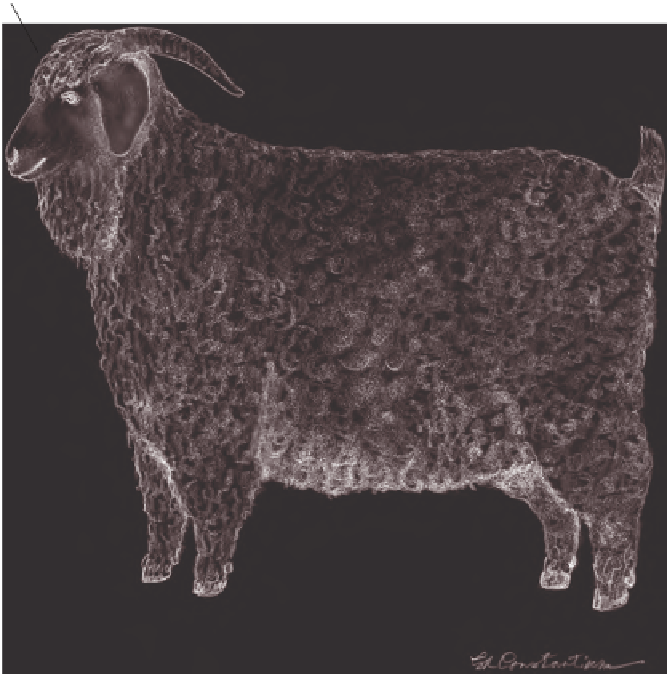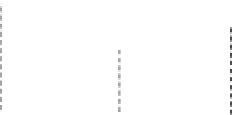Agriculture Reference
In-Depth Information
Horn
Shoulder
Withers
Forehead
Neck
Topline
Back
Bridge of Nose
Chine
Loin
Rump
Tail
Hip Bone
Ribs
Thurl
Tail Head
Nostril
Muzzle
Lower Jaw
Pin Bone
Throat
Thigh or Britch
Knee
Flank
Pastern
Toe
Dewclaw
Sole
Hoof
Figure 5.3
Fiber-type goat.
DETERMINATION OF AGE
Other methods of evaluation include the ability to estimate
the approximate age of the goat by observing the teeth
development. Goats should have a specifi c weight at a
certain age. Age and size proportions are important in
evaluating an animal. Although diet and health can infl u-
ence the growth of teeth in goats, the age of a goat can be
estimated based on their eight lower incisors. At birth, kids
are born with four pairs or eight temporary incisor teeth.
At approximately 1 year of age, the loss of the fi rst two
“baby teeth” occurs. Annually, two baby teeth are replaced
with permanent teeth, until all baby teeth are replaced, at
approximately 4 years of age. The amount of wear, after
4 years of age, is helpful in determining age. Some goats
may be missing one or more teeth and are referred to as
broken mouthed. Some older goats are called “gummers”
when the teeth are worn down to the gum of the jaw. See
Figure 5.4 for examples of what teeth in a kid, a yearling,
a 2-year-old, a 3-year-old, and a full mouth of teeth for a
4 - year - old goat should look like.
STRUCTURAL CORRECTNESS
Structure is the foundation of the animal, and correctness
of structure is important to build upon for better animal
productivity. The basis for “Form to Function” in any
specie of livestock is related to the angles of bone structure
and the ability to move or travel with ease. The animal's
ability to convert feed and forage to a usable protein
product (meat, milk, or fi ber) can be compromised by
structural problems and diffi culties. If an animal is unsound
and not capable of performing or functioning at an optimum
level because of structural problems, then emphasis on
selection for any measurable trait is for naught. Production
(meat, milk, or fi ber) is directly infl uenced by structural















































